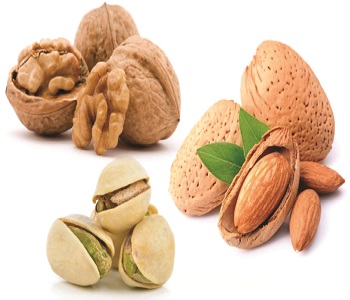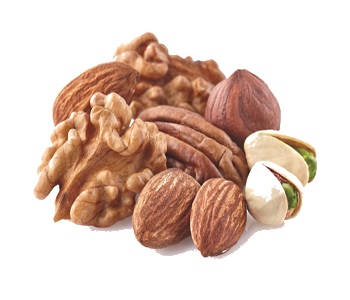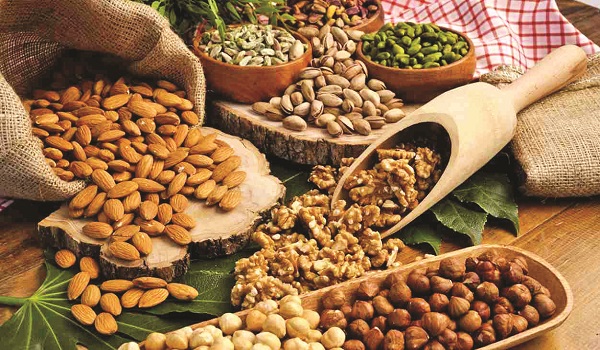Synopsis:
With a trajectory of notable development over the next five to six years, the future of the dry fruit industry looks bright as India cedes its status as the world’s centre for dry fruits. We explore the dynamics of the dried fruit sector in this interview article, asking whether new entries are expected and how established companies are reacting to growing competition.
The conversation highlights the significance of availability as a critical component of successful dry fruit sales, particularly in supermarkets and e-commerce platforms. The topic of development and expansion potential inside these platforms as well as their usefulness in efficiently reaching customers is discussed.
Crucially, the interview delves into how the volume of imports affects the future expansion of dried fruit brands in the Indian market. It talks about how companies trying to make an impression and succeed in this changing industry should strategically think about how to handle imports.
Finally, the interview includes perspectives from a Mewa India show participation, revealing goals and development tactics. The respondent talks on the importance of being a part of Mewa India and emphasises how the platform promotes networking, brand exposure, and general company growth.
This interview story gives a thorough rundown of the Indian dry fruit business and offers insightful information about the potential and problems that companies face in this booming sector.
MNT initiated a conversation with Devna Khanna, Director of i2i Consulting, representing California Walnuts in India. The initial question posed to Devna was focused on: What is India’s current position as a prominent hub for dry fruits, with a specific inquiry into the anticipated growth of the dry fruit market in the coming 5-6 years?

Devna explained, “India’s nuts and dry fruit market is expected to grow by over 8% in the next decade due to factors such as strong economic growth, a growing middle class, a young demographic, and post-pandemic health trends. However, market penetration is limited to Tier 1 cities, with untapped potential in Tier 2 and 3 markets. India’s low per capita consumption of nuts presents a significant growth opportunity, but increasing consumption will be necessary to reach the world average. India’s growing nut consumption will make it an even more important consumption market.

Baljit S. Chadha, President, Balcorp Limited, voiced, “With the growing middle class and health consciousness, we expect that consumption of all dry fruits will grow in India in the near future”.

Mukul Goel, Director of Harvest Hill elaborated on almond consumption. “Consumption of dry fruits increased 25% in 2023, the most in five years, as consumers have become more health conscious after the pandemic and turned to these rich sources of minerals and vitamins known to help improve immunity. Almond consumption has grown with more Indians identifying eating of the nutrient-rich crunchy nut that is packed with protein, fibre, Vitamin E and antioxidants with a healthy lifestyle. According to figures from the ministry of commerce and industry, almond imports totalled $531.06 million during the April-October period, or the first seven months of this fiscal year. Walnut imports will cross $85 million this fiscal year. “The demand is robust.” The US has become a top supplier of almonds and walnuts to India. There is a huge demand.”
Prasad Kamath, K.S.A Kamath and Sons noted, “Consumption of dry fruits and nuts have moved from only North Indian states to all of India. Especially post covid, most of India is consuming dry fruits and nuts for its health benefits. We foresee a steady growth driven by smaller towns and cities across India.

Siddharth Zantye, Partner of Zantye Cashew Industries predicted that the dry fruit consumption in India will grow in the next 5 to 6 years with approx growth 5 to 8%.

According to Uday Gupta, Managing Partner, Vara Lakshmi Spice industry, India is a potential market for dry fruit segment. Post Covid economy is getting into track and buying power of people is increasing. Dry fruit consumption at the household levels is also increasing. We can see substantial growth in dry fruit market. On an average, we can see 20% growth in this segment.

From the Commodity Trading Corporation, we have its Managing Director, Rajeev Pabreja. According to him, India is the only country in the world where the consumption of dry fruits is growing at a rate of 10-12% per annum. It’s a Rs 56,000 crore market today, and in the next 5 years, it will cross the Rs 1,00,000 crore mark.
Going ahead MNT asked its interviewees: How are existing dry fruit brands responding to the increasing competition in the market, and do you anticipate a rise in the number of new entrants in the near future?
Disclosing the facts, Devna enunciated, “Firstly, we need to realize that the Indian market is in expansion mode and there are enough opportunities for existing brands as well as new entrants in this market. Existing nuts and dry fruit brands are adapting to increasing competition by diversifying product offerings, emphasizing quality, and incorporating innovative packaging. Many are also leveraging e-commerce and digital marketing to reach a wider audience. Anticipating continued market growth, driven by health trends, convenience, and demand, it is likely that new entrants will emerge. Consumer preferences for healthy snacks is attracting entrepreneurs, large business houses & FMCG brands to penetrate this market and increasing the overall size of the market”.

Here, Baljit observed, “This is very strange that puzzling trend in India, normally as markets develop the number of players for imports, trade and brands get reduced; in India the “Bazaar” system still dominates, maybe India’s market is still in its infancy, that’s why we see an increasing number of players at all levels”.
Giving details about the increase in market growth, Mukul said that the global dry fruit market is anticipated to rise at a considerable rate during the forecast period, between 2024 and 2030. In 2022, the market is growing at a steady rate and with the rising adoption of strategies by key players, the market is expected to rise over the projected horizon. Existing dry fruit and nuts brands like harvest hill, Natraj, Tulsi, Happilo, Jewel’s farmer and many more are focusing more on product innovation and finding ways to keep customers attracted towards them. There are plenty of new entries on a daily basis in this market. Nowadays, there is a rapid increase in households’ women who are trading in these commodities on a very small scale. Dry Fruit Market size is projected to reach multimillion USD by 2030, In comparison to 2023, at an unexpected CAGR during 2023-2030”.
“Branded dry fruits and nuts sellers are on the rise. To see from a few handful brands with targeted market presence grown to a few hundred brands with pan India presence is really encouraging. It, however, appears that the consumer is still very price sensitive and not yet driven by brand. Packers are innovating new products like trail mix, handy smaller volume packs, while few of them are running ad campaigns most are using online platforms”, acknowledged Prasad.
There has been a lot of new entrants in the dry fruit supply legitimate and unscrupulous entities. With healthy competition industry will grow organically but industry rule says survival of the fittest, informed Siddharth.
Agreeing to the current awareness, Uday related, “Yes, we are seeing more brand endorsement in this segment. People are getting more awareness about the health benefits associated with dry fruits. We see local players are giving tough competition to established brands. With growing infrastructure local companies are upgrading themselves and are in the race to grab their share in the market”.
Rajeev shared his thoughts about healthy eating, stating, “Healthy competition is good for all, especially during/after the pandemic. More and more brands have emerged, and the dry fruit market has significant potential. Currently, only 25% of goods are sold as branded products, while 75% are still sold without any brand. With such a vast space and scope, everyone has the opportunity to grow.”
Thirdly, MNT approached with another query, about the availability which is very important for selling these products in supermarkets and e-commerce platforms. What is your perception about the growth and expansion at this platform?
Devna emphasized, “The growth and expansion of nuts and dry fruit sales on supermarket shelves and e-commerce platforms are poised for significant advancement. Supermarkets are increasingly dedicating shelf space to cater to rising demand for nuts and dried fruits. Simultaneously, the convenience and wide reach of e-commerce platforms have propelled online sales as well as increased availability across new geographical regions. As consumers prioritize convenience and health, these platforms offer a convenient way to access premium quality products including California Walnuts. The evolving retail landscape and the digital shift in consumer behaviour suggest continued growth in availability on both supermarket shelves and e-commerce platforms for nuts and dry fruit products in the foreseeable future”.

Baljit stated, “Currently, this platform does not represent a major percentage, with time their share will grow, but the trade has to be better prepared to service this platform”.
Yes, e-commerce is a very necessary platform, added Mukul. “Seeing today’s competitive market, I personally feel that a presence on e-commerce platforms and supermarkets is a must. Social media also plays an important role in marketing nowadays. There are many platforms of e-commerce like Jio Mart, Amazon, Flipkart, Blinkit, etc which helps us to sell and market our product.
“The main drawback I felt is that these are the least margin platforms to work on. If you have an e-commerce website, try to divert the traffic there instead of these platforms. But yes, there will be a drastic growth in your brand development by selling your products in supermarkets or on these platforms. Supermarkets like big bazaar, DMart, Hypercity etc have plenty of footfall which will definitely help you gain your brand wealth. Modern trade chains like all these big hyper markets and some small-scale ones will also help in potential growth. As I put here, is a simple statement which I want to state is: JO DIKHTA HAI WAHI BIKTA HAI. The more its visible, the more it’ll be sold. Since new entrants in the market sell inferior quality goods just to attract customers so for them. ACHA KHANE WALE ACHA HI KHATE HAI. For people who eat quality want quality, said Mukul.
“We are seeing few corporates and few start-ups working on last minute as well as last mile delivery both B2B as well as B2C. Growth in this category will bring the resources required for holding the goods at delivery points”, was to-the-point response by Prasad.
As far as growth and expansion is concerned, Siddharth is of the view that e-commerce and supermarket are growing very fast at the moment and will still grow in the 5 to 6 years. The customer has become an impulsive buyer which gives the impetus for the online business to grow in years to come.
“E-commerce also plays a major role in the supply chain. Dry fruits are traditionally sold though wholesalers and retailers. But after the entrance of e-commerce, we can see there is a substantial increase in demand. But on the cost point of view, the transaction charges are very high. Since dry fruits are costlier, the percentage margin of overhead makes the product costlier and less affordable to consumers. We need to redesign the cost structure in e-commerce platform and make is more affordable to all consumers”, Uday confirmed.
Agreeing with the availability for selling these products in supermarkets and e-commerce platforms, Rajeev articulated, “Now, all big brands are planning to increase their capacity as the demand is growing. New brands are emerging with more attractive and user-friendly packaging. Supermarkets are even introducing their brands and also selling other brands. Many new brands are bringing innovative ideas with different flavors and coatings on dry fruits, such as masala flavor, black pepper flavor, chilly flavor, and coatings of chocolates with different flavors.”
Fourth on line is, how does the quantity of imports impact the potential growth in the Indian market for your brand?
On imports impacts, Devna opined, “The Indian consumers are quality conscious and demand consistency which significantly influences the potential growth in the Indian market. A higher volume of imports of California Walnuts enhances product availability, ensuring a consistent supply to meet the rising demand. It also allows for diversification and introduction of new variants, attracting a broader consumer base. By strategically aligning imports with market trends and consumer preferences, we can leverage increased quantities to establish a strong presence and capitalize on the growing demand for quality nuts in India”.

Baljit noted, “This is not an impediment for any of the items and brands, it’s a free and open import trade, one has to just provide enough lead times for imports”.
“Naturally, firms who are directly involved in the import and export of goods and services are affected”, asserted Mukul. “When there is a large volume of imports, the profits of import firms increase and their share prices increase. On the contrary, if the volume of imports and exports goes down, import- and export-oriented firms are negatively affected and their share prices go down. If there’s a bulk quantity of imports then definitely it will be more profitable for my brand since the margins will be high. Mostly dry fruits and dry nuts are imported from various countries like Afghanistan, Iran, Chile, California, China”.
However, we importers are also affected by the exchange rate of the currencies for which i do hedging to minimize the loss if the currency rate is lower. Hedging is a very risk-taking factor for importers.
“As long as the imports come from legal routes, duty paid and brought in conforming to laws, it will not worry any manufacturer or packer. The Indian market is mature enough to understand cheap quality from good quality so we don’t see it as a threat. In cashew we have already represented to various government bodies through our associations to curb illegal imports. Primarily these illegal imports are more of health hazard to our consumers than the financial damage they make to the trade”, Prasad gave a precise answer.
Siddharth replied, “Imported raw cashew nut will increase as the processing capacity of Indian processor is growing with automation. Imported cashew kernel has to be regulated very strictly in the interest of the Indian processor and the cashew growing farmers which are in 45 % of the states of India”.
“Imports always create healthy completion. We are upgrading ourselves to meet the demands of customers, admitted Uday.
Imports have made life easier for brand owners as they can get more options to buy and good availability throughout the year. However, if the import exceeds the demand, it can sometimes be a problem as the market falls for unbranded goods suddenly, added Rajeev.
Finally, what are your expectations from Mewa India show? How will your participation in Mewa India help you grow?
Our expectations from Mewa India are centred on networking, exposure, and market expansion for the nutritious and versatile California Walnuts in different verticals of the Indian industry. Participation in the event provides a platform to showcase California Walnuts, connect with industry stakeholders, and explore collaborations to develop and expand the market share in India. The Mewa India show offers a targeted audience from India and across the world and will surely be an important tradeshow for the nut industry in the country going forward”, Devna conveyed.
Baljit appreciates, “Mewa India show is a good start and a great initiative, which will hopefully formalize this trade. Our company being the pioneer in this trade knows this very well. Our history is as follows:
Balcorp is the pioneer in this trade; it was the first company / exporter for introducing to India in a big way the following products: 1. USA Almond Kernels; 2. USA Almond in Shell; 3. USA Pistachio in Shell; 4. USA Pistachios in Shell in Consumer Packing; 5. Australian Almond in Shell; 6. Australian Almond Kernels.
Balcorp, a leading shipper of 80% of products under the Chadha brand in India, established the foundation of the Mewa trade in the first 20 years of imports. The Chadha Family, with over 100 years of experience in the Nuts and Dried Fruit business in Iran, India, and Canada, started Balcorp in 1976 in Canada. Today, Balcorp, led by Stephen and Ram, is one of the most trusted names in the trade.
“I got so excited when I heard about Mewa India. I think this show will be a great success since I haven’t attended such a show before which only consists of Mewa (dry fruits and nuts). I personally feel that this show will be of great help by gaining vendors. I will get to learn more about different types and qualities of nuts and dry fruits. By introducing myself in Mewa India will definitely lead to more advertisement and branding. Not only this, but to share a piece of knowledge on nuts and dry fruits which I have to people who are willing to know”, agreed Mukul delightfully.
Prasad expressed that the Mewa India show marks a first-time experiment, bringing together manufacturers, packers, traders, and retailers of nuts and dry fruits from all over India and abroad. It is a collaborative effort involving multiple nuts and dry fruits. Each commodity will voice its appeal to consumers, proving highly beneficial for the Indian consumer. The event serves as a pivotal point for price discovery and understanding the quality of each origin of supply. Prasad anticipates that Mewa will draw attention from across India to nuts and dry fruits. He hopes that, in the near future, NDFC will be able to run campaigns for the generic promotion of nuts and dry fruits, highlighting their health benefits, similar to campaigns like “Doodh” by Amul or “Sunday ho ya Monday” by NECC.

Siddharth also expresses excitement about the MEWA India show, referring to it as a maiden initiative. He appreciates the efforts taken by NDFC and extends wishes for great success to all stakeholders. Siddharth looks forward to knowledge assimilation and meeting stakeholders from across India. He aims to take the Zantye Goa brand, a pioneer in cashew processing, to every nook and corner of India.
Uday highlights the MEWA India show, expressing eagerness for increased interactions between buyers and sellers. He is particularly interested in technological upgrades and seeks promising leads for prospective buyers from around the world.
“For the Mewa India show, this is the first-ever biggest event on nuts and dry fruits. We are expecting around 140 exhibitors from 20 countries and over 2000 participants. Mewa 2024 will help all the participants grow their business through networking, meeting new buyers and sellers, learning about crop size and future trends. They will also get to know the health benefits of eating nuts and dry fruits. The future looks bright and promising”, concluded Rajeev.



